This was a rough year for many of us, crazy election, many beloved famous people gone, and I think it is fair to say we are all ready to wave 2016 good-bye. For me, personally, this has been a pivotal year in terms of my illustration work. I am currently illustrating my third children's book in a row and have discovered that I love the entire process of both writing and illustrating children's books. The story telling aspect is so challenging and rich and exciting whether through words or art or both. Here is another sneaky peeky into my illustration process for Hidden City which I believe is going to be released Spring '17. I thought it would be appropriate to post this tiny wintry scene which is cropped from a much larger illustration. Here was my sketch idea and my color version.
Viewing: Blog Posts Tagged with: illustration, Most Recent at Top [Help]
Results 1 - 25 of 6,454
Blog: Red Fish Circle (Login to Add to MyJacketFlap)
JacketFlap tags: chi, Hidden City, children's books, illustration, Add a tag
Blog: Amalou Studio (Login to Add to MyJacketFlap)
JacketFlap tags: children's book illustration, illustration, picture books, children's illustration, sketchbook, illustration process, digital illustration, Add a tag
Seems I've developed a habit of drawing Santa puppies each year.
Last year, we adopted a gorgeous puppy from the RSPCA and my brain had turned to puppy pulp from adoration. So, it was only natural I would draw a Santa puppy.
This year, I'm illustrating a picture book, featuring the cute fur-character above. Everyone else was wearing Santa hats and I didn't want the puppy to feel left out. This sweet, heartwarming Christmas story, written by Lili Wilkinson, will be published in time for Christmas 2017 by Allen and Unwin.
I'm currently up to the exciting colour stage of the picture book and have spent this week preparing and experimenting. Ignorant onlookers may call this part of the process, procrastination.
I've been working out my character colour palette, making my own texture brushes using pastel, pencil and watercolour, and experimenting with some new brushes I recently purchased from Kyle T Webster. I'm having so much fun procrast... I mean, preparing.
The deadline is fast approaching, so I'll be busy working on this book for the entire school holidays. My children have had to make their own fun at home so far. The inside of our house has turned into a paper jungle of lanterns, snowflakes and streamers dangling from windows, ceilings and fans. My husband and I pretty much have to crawl around on our hands and knees, so that we don't tangle ourselves up in it all. FYI - children design Christmassy lands for child height people only.
Our house is feeling festive at least.
Merry Christmas!
 |
| A small section of some final drawings from the book. |
 |
| A small section of my children's paper jungle. |
Blog: cynsations (Login to Add to MyJacketFlap)
JacketFlap tags: Carolyn Dee Flores, Texas illustrator, illustration, picture book, diversity, picture books, Texas author, Add a tag
By Carolyn Dee Flores
for Cynthia Leitich Smith's Cynsations
Illustrators bear witness.
Nothing could be more important.
One hundred years from now, when someone wants to know what it was like to be a seven-year-old girl in New York City on her birthday – or what it was like to be a Mexican-American child growing up in Texas – they won’t go to a reference book and look it up. They will look at a picture.
Illustrators, we must:
See with our fingers.
See with our hands.
See with our pencils.
So much depends upon it.
The world “literally” depends upon it!
The process for the bilingual picture book – A Surprise for Teresita/Una Sorpresa Para Teresita, written by Virginia Sánchez-Korrol (Arte Publico, 2016) – I knew I needed to concentrate on community. I looked at 10, 000 photographs of New York City. I’ve been to New York City before – so I tried to remember it and “breathe” it in. A Surprise for Teresita is about a little girl in a Nuyorican (Puerto-Rican/New York) neighborhood.
I loved the idea of the tropical Puerto Rican culture splashed against the New York City buildings and brownstones.
I got to work immediately.
I made models from foamboard.
I ordered a snow cone machine.
I studied the difference between “snow cones”, “raspas”, and “piraguas.” Delicious!
It became obvious to me that my color palette was going to be “snow cones.”
But … there was a dilemma.
How to capture the intense color I needed, using only the mediums of pencil and watercolor?
The answer: I couldn’t.
I needed oil paint - the brilliant color of oil paint!
So … encouraged by my mentors - Caldecott winner Denise Fleming and Caldecott winner E.B. Lewis – I set out to create a new illustration process.
And, thankfully, it worked!
Here is what I did:
The Problem:
1. Oil paint takes five months to a year and a half to dry.
2. Oil paint on a “raw” surface, such as untreated cloth or cardboard, tends to bleed and is very difficult to control.
The Solution:
1. Liquin medium. “One stroke” at a time. I squeeze each tube of oil paint separately onto my palette. I dip my brush into each color. Then I dip it into the Liquin. I mix the colors as I paint, directly on the cardboard.
2. After each application, I clean the brush, and start again.
3. Similar to “watercolor technique,” I use the “cardboard” as my “white.” In the close-up of Teresita (below) – the highlights in Teresita’s hair are cardboard showing through.
4. As I paint, the oil seeps deep into the cardboard.
5. The cardboard remains wet for weeks “on the inside” - but the “skin” of the painting dries within four and a half hours! It is ready to scan immediately!
This process enabled me to paint A Surprise for Teresita without bleed, quickly, and using the saturated colors that I desperately wanted! All the difference in the world!
Add a Comment
Blog: JZ ArtBlog (Login to Add to MyJacketFlap)
JacketFlap tags: illustration, projects, shameless self-promotion, Add a tag
My artwork is featured on the cover of Britain's Total TV Guide this holiday season! It was so fun to paint a traditional holiday scene at this time of year. The project really put me in the Christmas spirit!
Blog: Red Fish Circle (Login to Add to MyJacketFlap)
JacketFlap tags: illustration, Add a tag
Blog: Studio Bowes Art (Login to Add to MyJacketFlap)
JacketFlap tags: Illustration, drawing, sketch, pencil, brianbowes, illustratorforhire, dailydrawing, illustrator, Add a tag
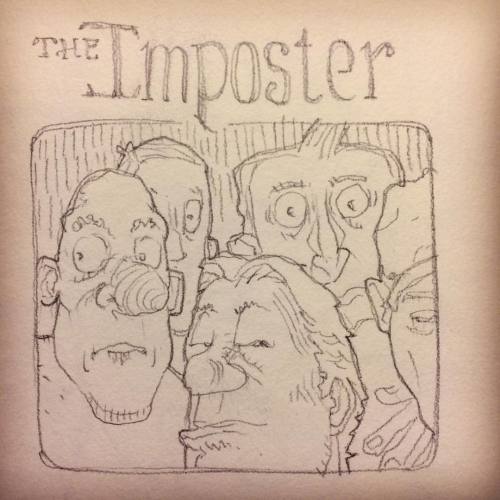
Blog: JZ ArtBlog (Login to Add to MyJacketFlap)
JacketFlap tags: illustration, inspiration, agents, shameless self-promotion, illustrators, art reps, Add a tag
The new MB Artists catalog is here! Check out all of our great new artwork, themed "Lifestyle".
Blog: print & pattern (Login to Add to MyJacketFlap)
JacketFlap tags: ILLUSTRATION, DESIGNERS, KIDS DESIGN, Add a tag
The Print & Pattern Designers for Hire Directory has a new artist to introduce this week. Hollie Holden is predominantly a childrenswear designer, having previously worked at JoJo Maman Bebe as Senior Designer for 3 years and as a childrens nightwear & underwear print designer for a UK based supplier for a number of years prior to that. Hollie now lives in Vancouver, Canada working as a
Blog: Red Fish Circle (Login to Add to MyJacketFlap)
JacketFlap tags: fabrics, Jump into Fun, illustration, Add a tag
Saw this photo on Instagram. So cute!! The pouf is sewn with my Jump into Fun hippo fabric. Love it!
Blog: print & pattern (Login to Add to MyJacketFlap)
JacketFlap tags: BOOKS, ILLUSTRATION, CHRISTMAS, CARDS, Add a tag
You may remember I posted about the publication of a new book by designer Paul Farrell a few weeks ago. But now I have actually seen the book in the flesh I just had to post again with new pictures as it is just so full of beautiful graphics. Called 'Great Britain in Colour' it is a treasure trove of colour and shape across a whopping 240 pages - just a small sample of which I have snapped
Blog: JZ ArtBlog (Login to Add to MyJacketFlap)
JacketFlap tags: illustration, inspiration, advice, shameless self-promotion, the life and times of the artist, Add a tag
Thanks go out to Kathy Temean for having me as her featured illustrator for her Illustrator Saturday blog! Visit the post to read the interview, learn more about my illustration process, my career journey, see recent artwork and revisit old favorites! Thanks, Kathy, for having me as part of your blog!
Blog: cynsations (Login to Add to MyJacketFlap)
JacketFlap tags: illustration, obit, in memory, Yumi Heo, author-illustrator, Add a tag
By Cynthia Leitich Smith
for Cynsations
Obituary: Yumi Heo by Shannon Maughan from Publishers Weekly. Peek: "[Henry] Holt’s Laura Godwin shared this remembrance:
'Yumi was extremely gracious, enthusiastic, and inquisitive,' she said. 'I loved the way she incorporated ‘mistakes’ into her art rather than erasing or deleting them.
"If she drew a squiggle where she hadn’t intended, it would show up in the final art as a tree or a rabbit or whatever struck her fancy. She was part artist, part magician—and always an inspiration.'"Yumi Heo Memorial Fund from Go Fund Me. Peek:
"Please show your support in honor of internationally loved children’s book author and Illustrator and creator of Polka Dot Penguin Pottery, Yumi Heo.
"Your support will help continue two of Yumi’s dreams, the steady training of her daughter as a professional figure skater and the founding of a scholarship program to help students in Korea who have big dreams and little resources."Add a Comment
Blog: wonkyworks (Login to Add to MyJacketFlap)
JacketFlap tags: crumhorn, illustration, puzzle, Add a tag
Blog: Cartoon Brew (Login to Add to MyJacketFlap)
JacketFlap tags: Artist Rights, Kushnirsky Gerber, Lili Chin, Mucha Lucha, Illustration, Law, Kohl's, Add a tag
What does an indie artist do when America's second-largest department store won't stop stealing your work?
The post ‘Mucha Lucha’ Co-Creator Lili Chin Files Copyright Infringement Suit Against Kohl’s appeared first on Cartoon Brew.
Add a CommentBlog: JZ ArtBlog (Login to Add to MyJacketFlap)
JacketFlap tags: projects, shameless self-promotion, illustrators, books, illustration, Add a tag
I am excited to announce that my artwork, along with several other illustrators from MB Artists, will be featured in Bill O'Reilly and James Patterson's new book "Give Please a Chance." My illustration is the one shown here at the bottom, with the girl and the trampoline. This title will be released on November 21st.
Blog: cynsations (Login to Add to MyJacketFlap)
JacketFlap tags: illustration, picture book, diversity, picture books, young adult fiction, dystopian, Aboriginal, Ambelin Kwaymullina, author-illustrator, Ambelin-Cyn series, Add a tag
 |
| Sample chapter from Candlewick Press |
for Cynsations
The second of a four-installment dialogue with Ambelin and Cynthia.
Our focus is on the creative life and process, speculative fiction, diversity, privilege, indigenous literature, and books for young readers.
Yesterday, Ambelin spoke on ethics, the writing process and own voices.
We have children’s-YA literature and the law in common. That’s actually a pretty common combination here in the states. Why do you think there are so many people involved in both?
Well, I’ve had some of my law students suggest the law is so horribly dry that it drives people to being creative in order to escape its clutches (these are generally the students who are studying law because their parents thought it was a good idea).
But for me at least, I think the reason I studied law and the reason I write are the same. In both realms, I am seeking justice – and justice, in Aboriginal societies, generally equates to balance, not just between human beings but between all forms of life (and everything lives).
I write speculative fiction because I want to write about the possibility of defeating injustice; to write about the terrible things that were (and are) while imagining what could be.
The oppressive law I wrote about in the Tribe series divides people into three categories: those without an ability (Citizens); those with an ability (Illegals); and those whose ability is considered benign (Exempts).
This is not an invented law. It is based on the Western Australian Natives (Citizenship Rights) Act 1944, a piece of legislation that purported to offer Aboriginal people ‘citizenship’ by exempting us from racially-based restrictions that only applied to my ancestors in the first place because they were Aboriginal.
In the Tribe series, this law is ultimately defeated by an alliance of the marginalised and the privileged, and by a heroine whose power is to identify and sustain the connections between all life.
And in writing of connections, I am writing of something that is central to the law in Aboriginal legal systems where (at its broadest) law is the processes of living in the world that sustain the world.
You clearly articulate the impact of white privilege on writing and writers, noting the negative impact on the work of Native voices and POC voices. What would you say to those Native and POC writers who may find themselves angry, frustrated, hurt or discouraged by these dynamics?
First: it’s not you. Exclusion is not something you are inventing in your head and you are neither unlucky nor unworthy.
It helps in this context to form connections with other Indigenous writers as well as with writers of colour, LGBTI writers, and writers with a disability.
You are likely to hear stories of authors getting similar comments across different contexts (e.g: you’re not writing to the Indigenous experience … this story is too Asian … gay books don’t sell … we’ve already published a ‘disability book’ this year).
It matters to have a network of people with whom to share both the good and bad experiences; and perhaps most importantly, to understand that you are not alone.
Second, never forget how to laugh. Some of the comments I’ve listed above have been part of the experience of other writers that they’ve laughed about with me – not because these comments are not discriminatory and hurtful, but because laughter has always been one of the ways in which marginalised peoples have dealt with pain.
Third, define success in your own terms. We all know what ‘success’ is supposed to be in literary industry terms: book sales and/or critical acclaim (preferably both). I’m not saying we shouldn’t aspire to that. But I also think that if marginalised writers define our success solely in the terms set by an industry that consistently privileges white, straight, cis-gendered people who don’t have a disability, we are also buying into an underlying lie.
The lie is that if we can just prove we are good enough we will be treated equally. But once equality has to be earned, it is no longer equality.
So I think it’s important that each of us define success according to what matters to us – and for me, it’s being a person that my ancestors would be proud of.
Book sales wouldn’t overly interest them. But honouring who they were, and who I am; treating cultural knowledge with respect; helping other Indigenous writers whenever and wherever I can – these are the kinds of things they’d be concerned about.
Fourth: be hopeful. I am. I locate my hope in people, and there are many, many people working towards a world in which all voices have an equal opportunity to speak and all stories are equally heard.
I think change will come, and in the meantime, I’m proud to be a part of a global community of voices, marginalised and privilege alike, that are speaking out for justice.
While you don’t feel it’s appropriate for non-Indigenous writers to reflect your community in first person or deep third, you are open to them writing secondary characters. Why does your opinion differ depending on how centered the character’s perspective is in the story?
| Ambelin's desk |
For me, writing from an ‘outsider’ perspective (so not in first or deep third) is to respect boundaries; to accept there are limits on what we can know of others and how we should represent others in our own work.
When I write of experiences of marginalisation not my own, I do it from an outsider perspective – reflecting that this is much as I can understand and that understanding may of course be wrong; I am not suggesting that I know what it is to see the world from an ‘insider’ view of a group to which I don’t belong. I think the spaces must be created for everyone to speak to their own worlds, and I want to be part of making those spaces a reality.
What advice do you have for non-Indigenous writers in crafting those secondary characters?
I think something you’ve said is the best place to start – you’ve spoken of the need for writers to read 100 books by Indigenous people before writing about us.
I agree. No one should be writing an Indigenous character without being familiar with Indigenous stories (not the ones told about us but the ones told by us).
It’s also important to ensure that any stories people are reading are ethically published because there is a vast body of Indigenous stories that were taken by anthropologists and others and are now in the public domain without the informed consent (or sometimes even the knowledge) of the Indigenous peoples concerned.
The easiest way to check that a story is appropriately published is to see who holds the copyright; where Indigenous peoples hold copyright in their own stories it is at least some indication that they control the text.
In addition to reading stories, I’d say, become familiar with representation issues. Engage with the online dialogue happening around representation and children’s literature as it relates to Indigenous peoples. There are no shortage of voices speaking in this space.
And finally: words spoken about marginalised peoples have a weight and a cost. But if you are not a member of that group, then it’s a weight that you don’t carry and a cost that you don’t pay.
So don’t measure the impact of your words by how they will be read by people like you. Measure them by how they’ll be read by the people you’re writing about.
How did you learn your craft as a writer and illustrator?
By doing! I have no formal training in writing or illustration. But nor do a lot of Australian Indigenous writers and illustrators, and we have been storytellers for thousands of years.
So to learn craft I look to the work of Indigenous writers and artists, both within Australia and elsewhere, as well as to the ancient teachings of my people.
What inspired you to direct your talents toward creating stories for young readers?
In my YA series, I was writing about a superhero, so it had to be about a teenager. I don’t believe grown ups have it in us to save the world, because we are spectacularly failing to do so.
But in the young I see all the hope for the future – they are more interconnected, quick to embrace new ideas, and passionate about fighting anything they perceive as an injustice.
They’re also more honest, especially the children for whom I write picture books. When they like a book, they write me lovely letters telling me how they sleep with the book under their pillow and begging me to write more. When they don’t like it they’re equally forthright.
People ask sometimes whether its difficult as an author to deal with bad reviews, to which I say: try writing for six-year-olds. Every once in a while, children send me letters about one or the other of my picture books that begin something like this: “My teacher made me read your book. I didn’t like it.”
I’ve had a few of these letters that went on for ten pages or more, and since that length is like War and Peace from a six-year-old, it means I’ve had kids hate my work enough to send me the child equivalent of Tolstoy.
Adverse reviews from grown-ups are nothing in comparison.
What was your initial inspiration for The Tribe series?
 |
| Sample chapter from Candlewick Press |
I said, “That’s a pretty good title – what’s the story?’
To which Blaze replied, “Oh, there’s no story. Just the name, and I can’t be bothered writing it so I’m giving to you.”
Having bestowed the title of the novel upon me, he wandered off, leaving me to start thinking about the story. (And for anyone who’s read any of the Tribe series, the character of Jaz is very like my brother Blaze).
What were the challenges—literary, research, psychological and logistical—of bringing the stories to life?
I think the primary challenge is this: in so many ways, I wasn’t writing fiction. A post-apocalyptic world is not a fantasy for Indigenous peoples; the colonial apocalypse has already happened and much of The Tribe series is drawn from Australian colonial history.
Much of it too is drawn from the experiences of my ancestors and that is why hope runs so strongly through the narrative. They held on to hope through hard, cruel times when all their choices were taken away from them.
Indigenous peoples are so often spoken of as victims and I certainly don’t wish to minimise the suffering and the multi-generational trauma inflicted upon us by the colonial project. But the very fact that the Indigenous peoples of the world survived determined efforts to destroy us demonstrates our great strength.
I think the ability to hold onto hope is part of that strength and its something I try to honour.
You’ve created several picture books with Sally Morgan. Could you tell us about your work together?
 |
| Ambelin with her creative family |
Generally, once we’ve had a chance to think about the criticism we come creeping sheepishly back and agree that yes, actually, that particular portion of the narrative (which we were previously so proud of) does indeed need more work.
I think from the outside our working process probably looks chaotic; we all talk at the same time and over each other; generally, the person with the best story gets to hold the floor until they get boring and someone else interrupts. If you want a place in the conversation in my family, you have to be prepared to earn it.
What can your readers look forward to next?
I’m working on three YA novels right now, but the one I’ll finish first is a book I’m writing with my brother Zeke.
It’s a mystery with fantasy elements that’s told from the perspective of three Indigenous female protagonists. It’s been a difficult book to write in places because terrible things happen in it, but its ultimately a story about the power of young Indigenous women and how they find their way home. Add a Comment
Blog: print & pattern (Login to Add to MyJacketFlap)
JacketFlap tags: BOOKS, ILLUSTRATION, Add a tag
Illustrator, graphic designer and print-maker Paul Farrell's debut book 'Great Britain in Colour', was published on 22 September by Boxtree and Pan Macmillan. The 166 full page colour illustrations are one years' work and the book was completed almost two years from the start. It is a personal journey full of memories and travels from the last 45 years or so. There are hidden gems, familiar
Blog: Michelle Can Draw (Login to Add to MyJacketFlap)
JacketFlap tags: illustration, background, zelda, layout, legend of zelda, a link to the past, background art, layout design, Add a tag
Blog: print & pattern (Login to Add to MyJacketFlap)
JacketFlap tags: ILLUSTRATION, Add a tag
Staying on the subject of cool graphic illustrators this is the work of Ben Newman. I discovered Ben through his latest book 'Professor Astro Cat's Atomic Adventure' which I had snapped in Bologna back in September. Ben is based in London where he works as a freelance illustrator and lectures on illustration. His graphic geometric style has been described as 'Bauhaus fuzzy felt' and his clients
Blog: print & pattern (Login to Add to MyJacketFlap)
JacketFlap tags: ILLUSTRATION, DESIGNERS, Add a tag
Kat Uno is an illustrator based in Hawaii. After working for about 6 years as a graphic designer for a government agency Kat decided to strike out on her own in 2015. She is currently represented by the Astound Agency and has been illustrating books for going on 2 years. Although her agency work is her bread and butter, Kat also really loves designing cute characters and patterns. You can find
Blog: the dust of everyday life (Login to Add to MyJacketFlap)
JacketFlap tags: Pencil and Watercolor, childrensbook illustration, illustration, Fall, Aquarell, Bernhard Oberdieck, Add a tag
Blog: print & pattern (Login to Add to MyJacketFlap)
JacketFlap tags: ILLUSTRATION, DESIGNERS, FASHION PRINTS, Add a tag
Our second designer today is London based Jason Ansell who worked in Fashion for 15 years creating womenswear for the high end and high street. But for the last 2 years Jason has been busy redirecting himself towards his love of illustration. He has taken MATS (Make Art That Sells) classes and has been busy building up a portfolio. Here are some lovely examples that show Jason's style and he is
Blog: print & pattern (Login to Add to MyJacketFlap)
JacketFlap tags: WALL ART, ILLUSTRATION, ETSY, Add a tag
Print & Pattern has a new sponsor this week in the shape of Lu West Fine Art Prints. Many of you will know Lu's work from her previous shop 'Mengsel'. Lu is now concentrating on limited edition silkscreen prints (plus continuing her freelance illustration work). Here are some examples of Lu's lovely prints. including her well known bigger boat design at the bottom of the post. Lu also has an
Blog: print & pattern (Login to Add to MyJacketFlap)
JacketFlap tags: BOOKS, ILLUSTRATION, Add a tag
Today we have some snaps I took in my local branch of Waterstones. They had some lovely patterned book covers for Nancy Mitford novels laid out on a table. It turns out they were released by Penguin last year to celebrate 70 years since the first publication of her novel 'The Pursuit of Love'. The covers featured painted geometrics by New York based artist Lourdes Sanchez. The in-house design
Blog: print & pattern (Login to Add to MyJacketFlap)
JacketFlap tags: BOOKS, ILLUSTRATION, Add a tag
Also spotted whilst book shopping recently was this lovely children's book "What do grown Ups Do All Day?" published by Wide Eyed. Illustrated by Paris based artist Virgine Morgand this large picture book features over 100 professions to inspire and educate little ones. Virgine is well known for her illustrations of people and can be found online here for commissions, or you can find the book
View Next 25 Posts



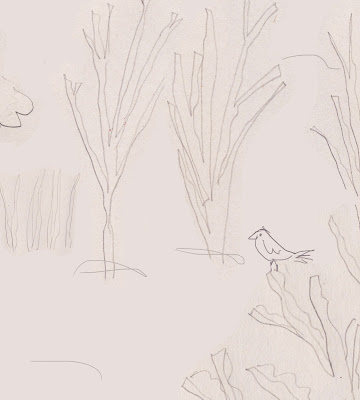












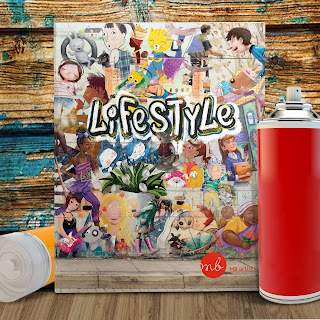






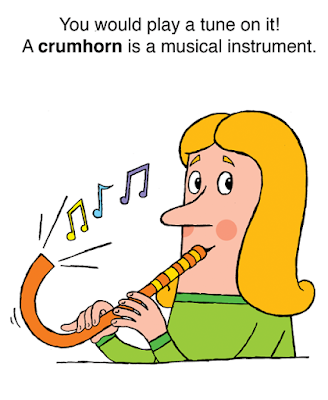




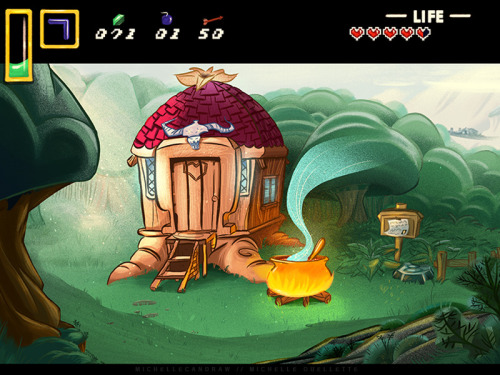

cute puppy!
I can see why your pup ends up in your art. My art is inspired by things in my world.
Thank you for stopping by so that I could see your charming art.
Wishing you the best with your project.
Thanks Tammie Lee :)
Hope you've had a wonderful Christmas! Thank you for popping in my cosy blog. x